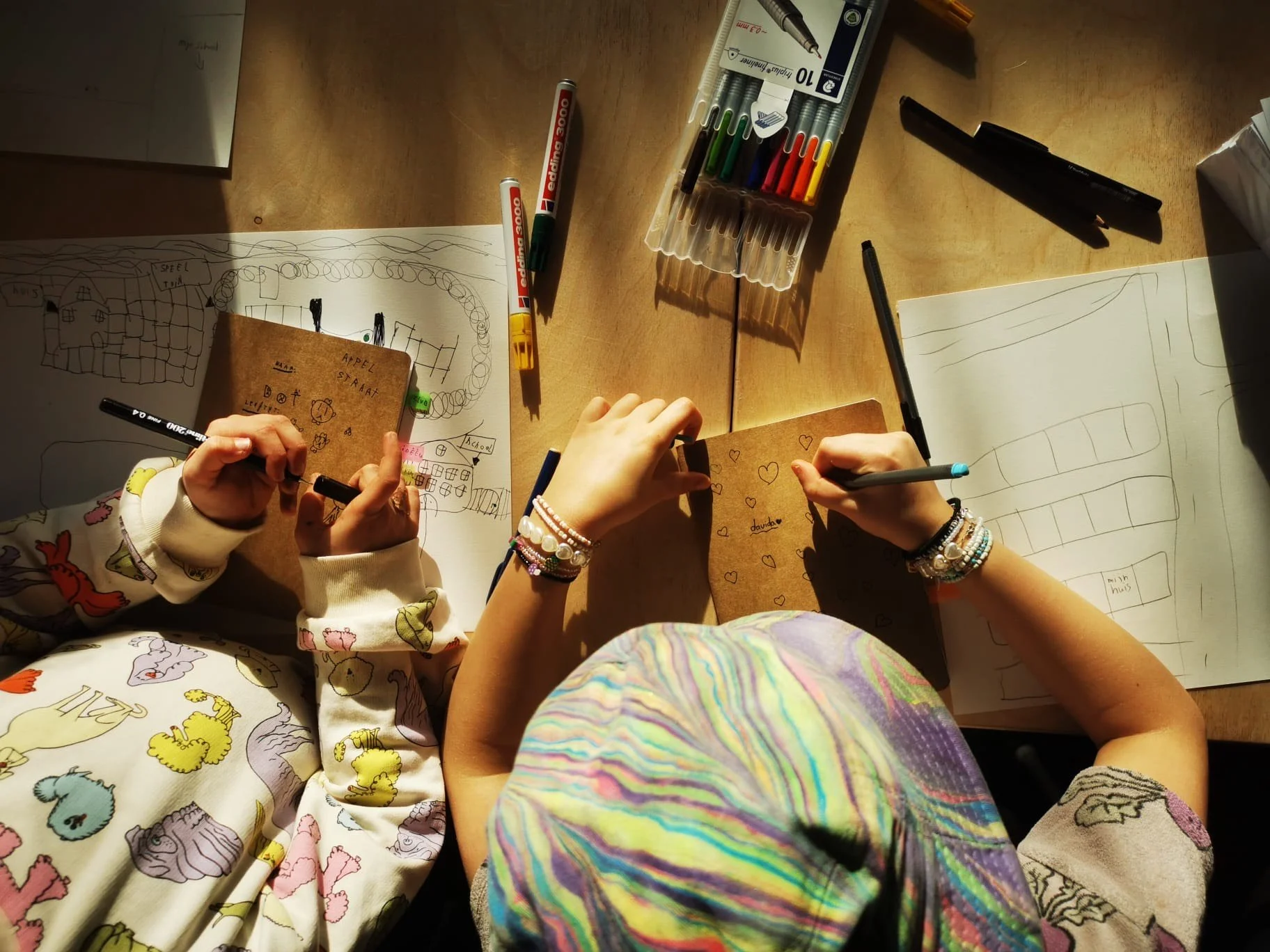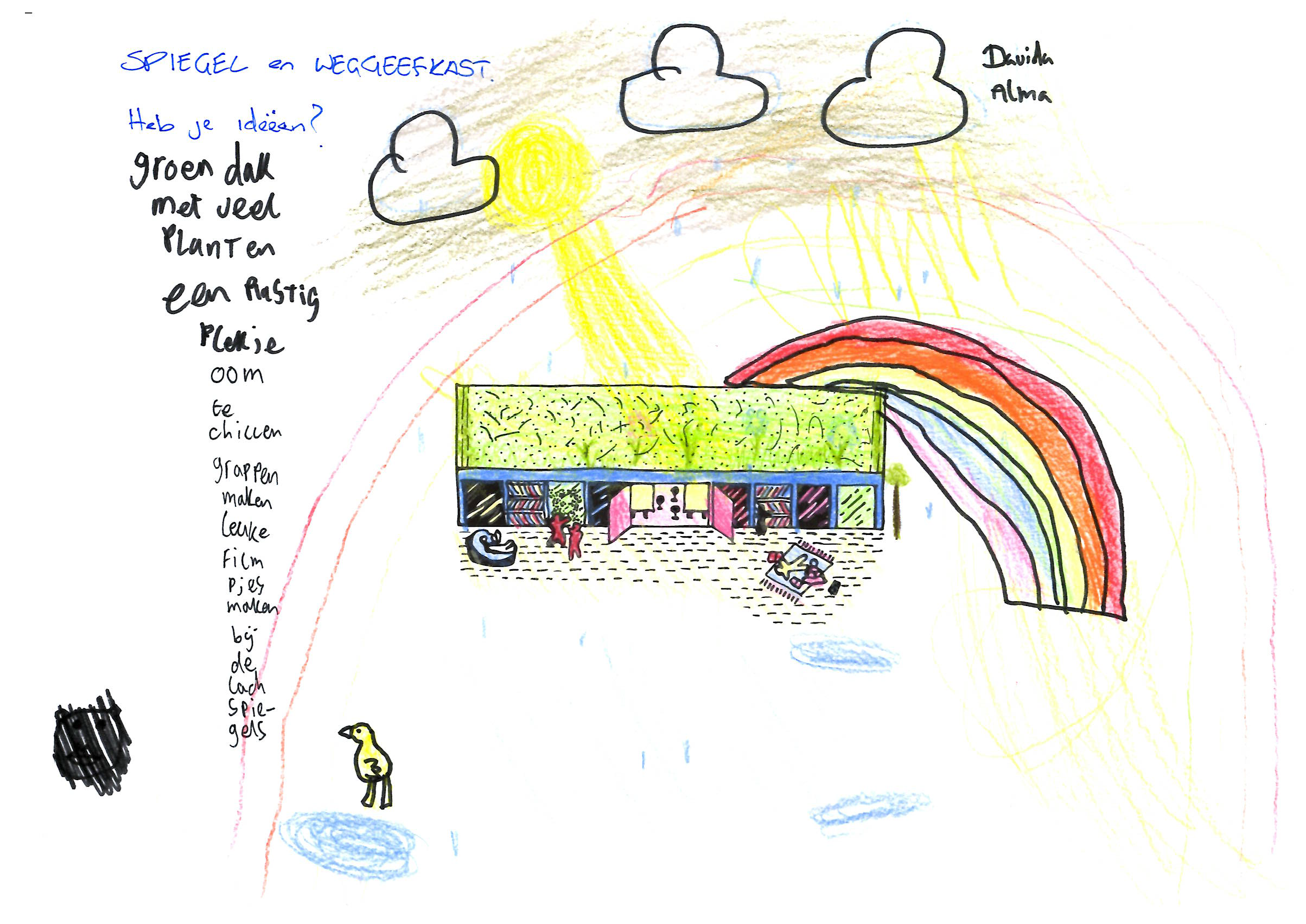That’s not fair!
What would the city look like if it embedded children’s voices into placemaking and design?
The city is designed as a place for adults. With the project That's not fair! we seek effective design-research methods to embed children's needs in the design of public space. The starting point for the project was the proposition that;
In a “Just City” children should have the same right to the city as adults.
To enable this vision we empowered children to participate in shaping their neighbourhood, with the goal of challenging the adult centric nature of urban public spaces and processes. The project was a selected for the Ruimte voor Rechtvaardigheid open call from the Stimuleringsfonds, who sought new and different perspectives on equity and inclusion in Dutch cities.
We worked with a group of girls aged 8-10 in Amsterdam West. Girls of this age begin to experience exclusion from public spaces. Due to numerous factors, they have outgrown their neighbourhood playgrounds and do not yet having the freedom of the wider city. On a neighbourhood level their needs are not given much consideration. They are often not consulted in the design of public spaces and have different needs to boys of a similar age who avail of the sports courts found around Amsterdam West.
This is a structural inequality that has become a major blindspot for designers and policymakers. Girls simply want safe and social spaces that they can identify with, to hang out, have fun, play, connect with nature & play sports. Which sounds simple so why then does this gap or blind spot exist? And what can be done to address this?
Our design-research project “That’s Not Fair!”—selected in the Stimuleringsfonds’ Space for Justice call—started from a simple proposition: in a just city, children hold the same right to the city as adults. We ran six workshops with girls aged 8–10 in Amsterdam West. They became researchers, inventors, and designers, they mapped what mattered: crossings you can trust, cleaner and greener streets, challenging play and sports areas, places for friendship and belonging. These ideas were translated into a number of wild, fun, cosy, intriguing designs for different elements both permanent and ephemeral in the neighbourhood.
One idea sought to directly challenge the existing dominance of sports courts, that was the "Girls Garden" a rewilded and reclaimed court, where girls could hang out look after the space being directly involved in planting, making and shaping the garden. A place to hang out and grow just for themselves.
Other ideas we tried to get realised with the local West Begroot participatory budget. After a feasibility check two ideas got through to the voting round, the "dans en lachspiegel" did not receive enough votes, the bloemenlint was successful and will be realised in October 2024.
The project shows the girls don't lack ideas and are clear in expressing their needs, what's missing are the adults that are willing to listen, and the context where their ideas for the wider city are taken seriously by those with the power to implement them.
Spatial justice for this age group means actively taking part in shaping the spaces they feel excluded from. Do you want to know what this looks like? Go and ask the girls!
Type: Design Research
Date: 2024-25
Funding: Creatieve Industry Funds NL
Collabration: Ilona van Sante, Ozlem Aatol, Gerben Hellemans, Kraijcek Foundation
Team: Daryl Mulvihill, Lola Caunec, Thijs Baselmans, Hannah van der Sluijs
Status: In progress







